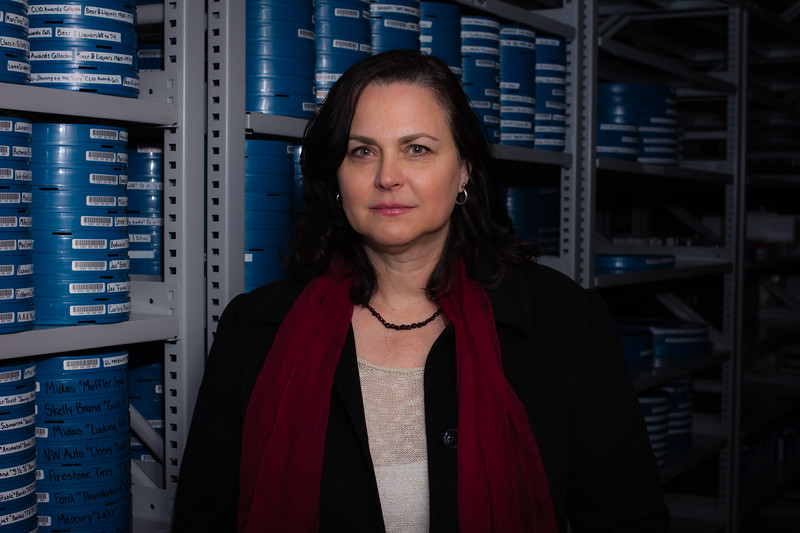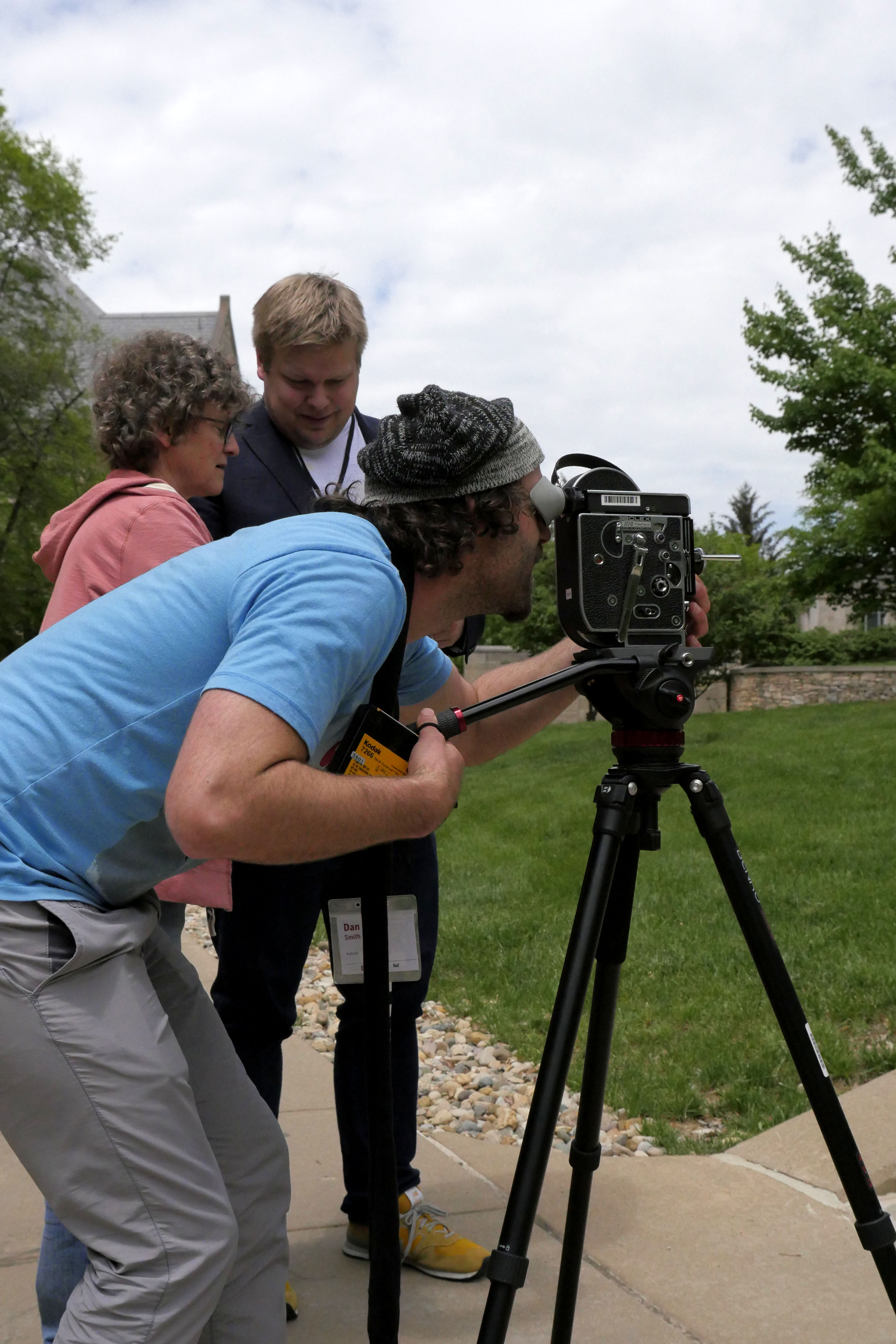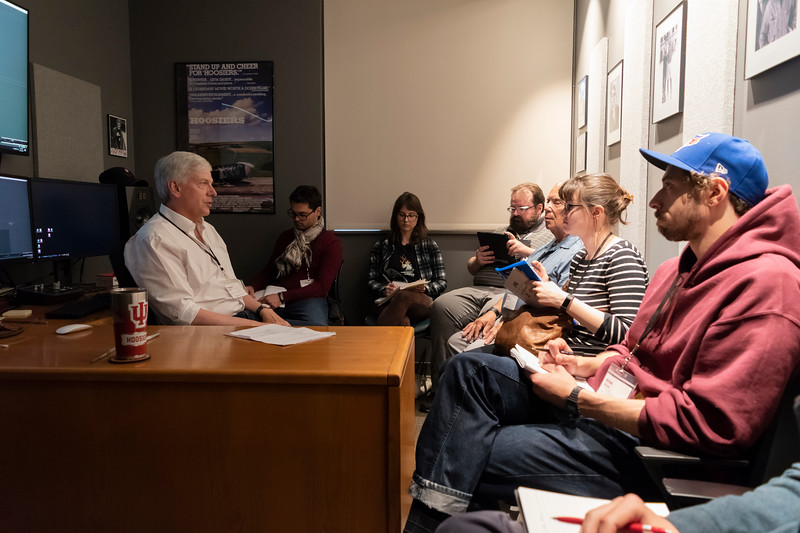By Rachael Stoeltje, BAVASS Director and Director of the Indiana University Libraries Moving Image Archive

This past May, for two weeks, Indiana University, Bloomington was visited by 50 professional archivists, filmmakers, scholars and film projectionists from 12 countries to participate in the International Federation of Film Archives (FIAF)‘s new training program–the first Biennial Audio Visual Archival Summer School (BAVASS)— a new multi-week FIAF training model built with a comprehensive curriculum of the existing issues in the field of audiovisual archiving and preservation today.
This new training model was developed as part of the FIAF Training and Outreach Program by Indiana University Moving Image Archive’s Rachael Stoeltje and FIAF’s Training and Outreach Coordinator David Walsh, with the support of FIAF’s Administrator Christophe Dupin. BAVASS has been built on earlier FIAF models and the advice of our FIAF predecessors. It has been made possible in large part due to workshops held around the world developed by FIAF’s David Walsh, and like those created in partnership with our colleague Shivendra Singh Dungarpur through his Film Preservation and Restoration Workshops in India.
The schedule for our program allowed for lectures, hands-on workshops, screenings, opportunities to meet with the school’s faculty and time to build networks among the students themselves. This year’s event started each morning with lectures on core issues. The lectures covered everything from Film Preservation and Digitization, the Technology and History of Motion Picture Film, Film Restoration, Video History and Digitization, Cataloging, Copyright, Photo Preservation, Audio History and Preservation, Digital Preservation, Open Source Tools, Film Programming, Managing Digitization Projects and the History of Film Archives with an overview of the early years of the field, to better understand who we are today as archivists.
In the afternoons, we offered small group, hands-on workshops, which students pre-selected prior to arrival. The very practical opportunities that were presented by the Film Handling and Identification workshops, the Film Projection workshops and the Small Scale, DIY Video Digitization workshops were praised by participants, as were the hands on digitization workshops for video, film and audio formats. Kara Van Malssen’s Simulated Disaster Response and Recovery, with a real life scenario and a great deal of salt water soaked media, proved instructive, challenging, and remarkably engaging. The experience utilized simulated narratives and scenarios encountered in the midst of an archival disaster, including the “theft” of a valuable item, as well as an “upset” filmmaker, whose collection the disaster impacted. The situations were designed to simulate for participants the kind of chaos that can accompany these types of scenarios.

Susanne Schwibs’ Filmmaking workshop, in which students shot film on 16mm cameras and processed the film the same day using alternative processes, also received positive feedback–though, as with many of the workshops, the primary criticism was that the workshop should have lasted the entire day!
Rob Byrne’s Film Restoration workshop was eye-opening for some in that it offered new knowledge about the amount of time, (sometimes years), that is required to properly restore one motion picture film title.

One of the other workshop highlights was Storage and Environments for Preservation. This one included tours of the Ruth Lilly Auxiliary Library Facility (ALF) — the off-site cold storage vaults at Indiana University. The participants visited the core vaults with temperature and relative humidities measuring 50 degrees (Fahrenheit) and 30%RH–ideal environments for magnetic media, books and paper. The new ALF 3 was also part of the tour, with an entire floor devoted to motion picture film, an interior freezer for deteriorated acetate film, and a steady temperature measuring 38 degrees Fahrenheit. The vault tours and accompanying workshop on storage and preservation exemplified the core actions in which one can take part to preserve original material for the longest and most important part of archival care-taking. A bonus to this tour were the rides up to the 40 foot ceilings of the storage facility in which students could view the vastness of the collections from up high.
We were remarkably fortunate to have exceptional faculty who were committed to teaching at the summer school. This 38 person line-up included recognized experts in film, video, and other media archiving and preservation, copyright, cataloging, photo preservation, storage and more. We were grateful to have experienced trainers affiliated with IU who committed to share their expertise as faculty in the school. In addition to the IU faculty, the external trainers, who came specifically for our summer school included FIAF’s Training and Outreach Coordinator, David Walsh; AVP’s Digital Preservation, Disaster Response and Metadata Specialist, Kara Van Malssen; Yale University’s Photo Conservator, Paul Messier; CUNY’s AudioVisual Archivist and Open Source Specialist, Dave Rice; Independent Film Restoration Specialist, Rob Byrne; NYU’s Video Preservationist, Michael Grant, Independent Film Preservationist Ken Weissman, Netherlands Institute for Sound and Vision’s Digital Media Research and Access Specialist, Johan Oomen, and FIAF Historian and Senior Administrator Christophe Dupin. These trainers lent a wide array of talents, experience, and specializations to BAVASS, and we are most indebted that this rich body of experienced and qualified individuals in the field traveled to Bloomington and gave so generously of their time and expertise.
Evenings were filled with film screenings that specifically addressed many of the core topics being taught. We screened film restorations, which were introduced by the FIAF colleagues who restored them, such as Behind the Door (1919), introduced by Rob Byrne, and Tomka and His Friends (1977), introduced by Ken Weissman, who restored the film while working at the Library of Congress. Iris Elezi, Director of the Albanian Film Archive, which holds Tomka, was also a participant of the summer school. Other nights included screenings of films which told stories of saving our cultural heritage around the world in India with Shivendra Singh Dungarpur’s Celluloid Man (2012) and in the Congo with La Belle at the Movies (2016), introduced by the Director Cecilia Zoppelletto, who also participated in the summer school. The final category of films screened were films which use archival film to make new works. These films were FIAF colleague Julien Faraut’s John McEnroe: In the Realm of Perfection (2018) and Peter Jackson’s film They Shall Not Grow Old (2018), which has received a great deal of media attention for its alterations of film with color and sound additions, and its transformation of World War I footage from the Imperial War Museum into a 3D motion picture. The Jackson film was followed by a lively panel discussion about the meaning of “restoration,” issues related to altering archival footage, and strategies for finding new audiences using historic moving image material. Panelists included FIAF/ Imperial War Museum’s David Walsh, IU President Michael McRobbie, and IU Libraries Moving Image Archive’s Rachael Stoeltje. The panel was moderated by Jon Vickers, Director of the IU Cinema. All films were screened at either IULMIA’s Screening Room or at the IU Cinema, and all screenings were well attended by the summer school, as well as members of the general public.
The school included tours to many of the special collections and libraries on the IU Campus, including the University Archives, the Archives of Traditional Music, the Black Film Center Archive, the Indiana University Libraries Moving Image Archive and the Lilly Library, where Director Joel Silver and Head of Public Services Rebecca Baumann pulled remarkable treasures from the John Ford, Peter Bogdanovich, John Boorman, Pauline Kael, Orson Welles and Rita Hayworth collections. The students got to hold an Oscar and peruse Welles’ illustrated love letters to Rita Hayworth and were offered a rare glimpse at some of the Lilly Library’s rare books and manuscripts, in addition to all of the film gems.
To continue improving the program for future schools and to perpetuate the learning experiences it offers, we are working with a faculty member in IU’s School of Education to oversee and lead the evaluation process of this event and to create a collaborative learning module for BAVASS. The evaluation began during the summer school and will continue throughout the one-year follow up period. As part of this learning collaborative, students will followup the two-week school with online meetings to discuss their successes and brainstorm solutions to challenging problems they are experiencing. IU staff and expert trainers will also participate in these meetings to learn of the problems this network of participants are experiencing and to offer their advice. These collaborative meetings will occur monthly and will be supported through Zoom. This collaborative learning model allows participants to discuss emerging and timely issues and their solutions in collaboration with their BAVASS cohorts or with assistance from our expert trainers. This collaborative process will continue for 12 months to ensure that the benefits of the training endure and are disseminated more widely.
The primary goal of the 2019 summer school was to educate a new team of archivists whether they were in mid-career, at the beginning, or simply wishing to advance their knowledge. Around the world, in small archives and large, in national institutions, cinemas, academic institutions, or private collections, the goal is the same. We hope that upon completion of our summer school that the participants returned home well grounded in archival principles and practice, having gained the knowledge and skills to preserve and care for collections around the globe, now knowing the necessary steps to provide access to these collections–whether in a cinema, through programming and projection, for individual viewing of original analog material, or online, after learning best practices for digitization, (when legally able to do so consistent with rights issues). At the end of the program, we believe we returned well-trained archivists to their home archives–or set them on a path to start work at a new archive–to preserve, make accessible, and save our world’s cultural heritage on film, video, audio, and digital formats.
We intend for the Biennial Audio-Visual Archival Summer School to continue in the future and we plan to offer this program every other year, possibly in locations around the world, in order that it may have the largest impact possible. The evaluations and ongoing training will allow us to customize the program and we will develop a packaged and detailed program which can serve as a model for future schools.
FIAF and the the FIAF Training and Outreach Program, along with tremendous support from IU and the IU Libraries made this event possible. Thanks to both for their financial support, which allowed us to bring all of the talented faculty to Bloomington to participate and to offer this program at an affordable rate for participants. In addition, FIAF also most graciously offered three scholarships that allowed individuals to come to the program who might not have been able to participate otherwise. Enormous thanks to FIAF and to David Walsh and Christophe Dupin in particular for this support and partnership to have made this BAVASS so successful.
Leave a Reply